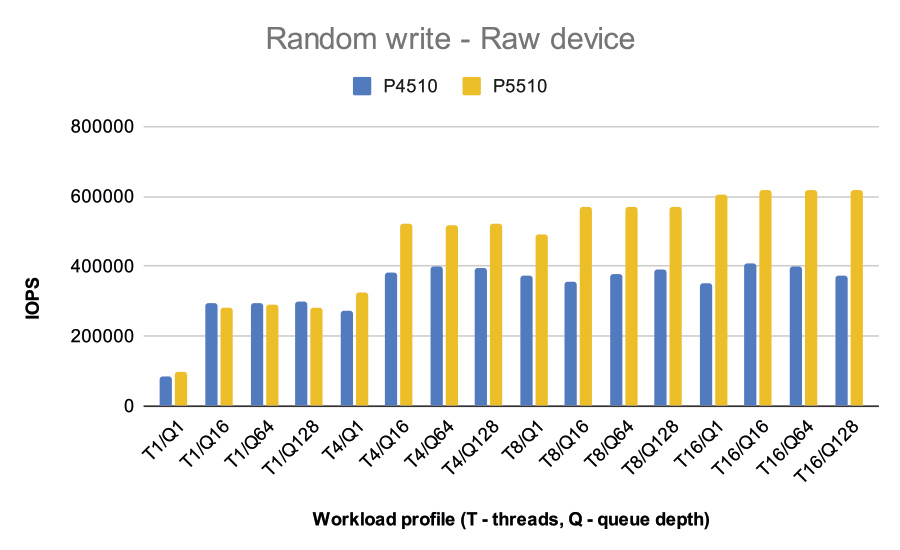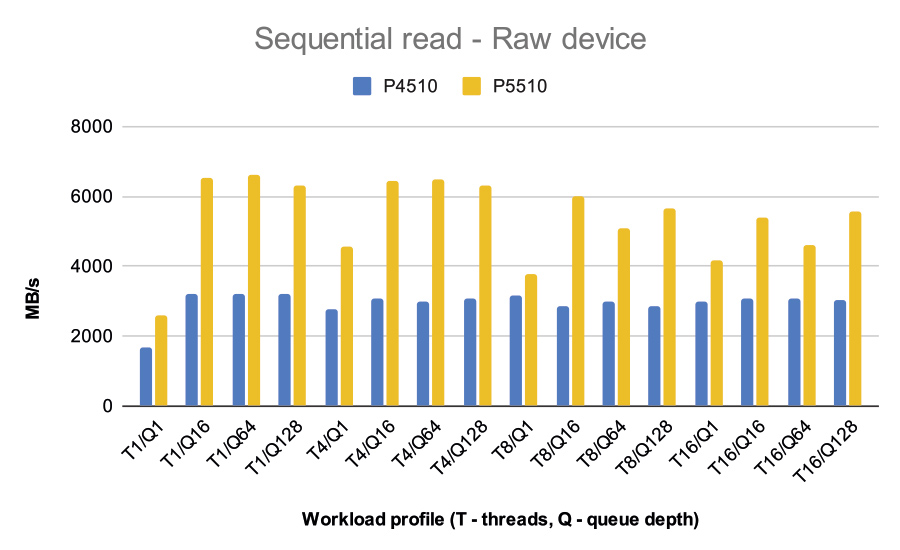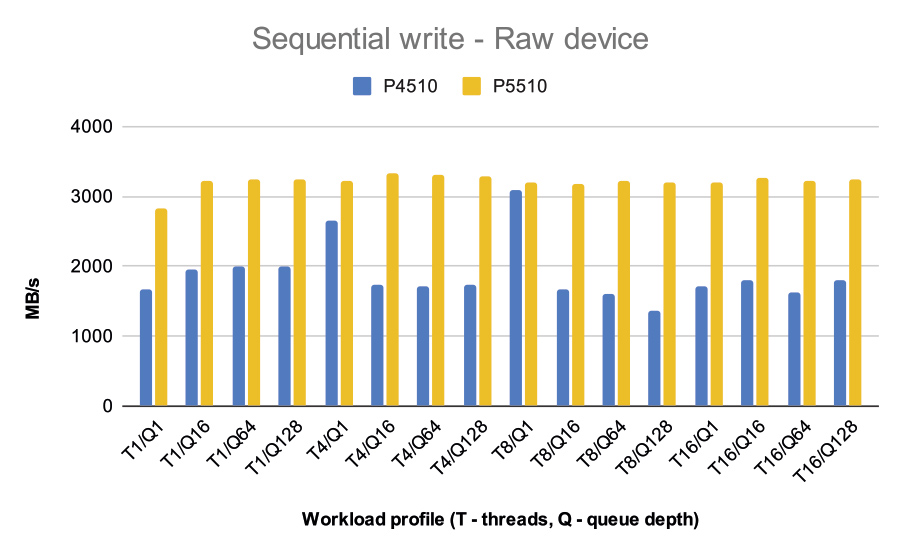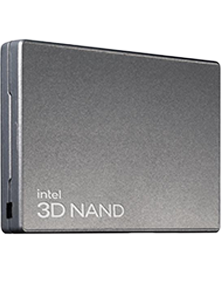The following certification report aims to present the results of various compatibility and performance tests run on the Intel P5510 3.84 TB NVMe Solid State Drive when used in combination with Open-E JovianDSS. A description of the testing methods used during those procedures will also be provided. The results, obtained from the aforementioned testing, along with technical specifications were used as the basis for recommendations on specific roles in which to use the device under test (DUT) in Open-E JovianDSS-based systems.
Intel® SSD D7-P5510 Details
The following table includes the Intel D7-P5510 3.84 TB NVMe drive hardware specifications.
| Product name | Intel SSD D7-P5510 |
| Model name | SSDPF2KX038TZO |
| Storage Capacity | 3.84 TB |
| Form factor | U.2 2.5” |
| Interface | PCIe 4.0 x4, NVMe |
| Technology | 144L TLC 3D NAND |
| Enhanced Power Loss Data Protection | Yes |
| Security | AES 256 bit encryption |
Testing Process
Validation was performed for both the Single node and HA non-shared storage cluster configurations. The tests were focused on the work of Intel SSD P5510 as a data disk for all-flash storage and compared to the performance of the previous P4510 model. Below we have described the tests of a raw device.
Random Read and Write Performance
In order to be able to properly interpret the results acquired from the tests of the Intel D7-P5510 drive while it was used as a data storage device for Open-E JovianDSS, it’s necessary to measure the raw performance of the device.

The results illustrated in graphs 1 and 2 present the comparison of the workload profiles of Intel SSD P5510 and P4510 during random read and write performance. Intel SSD P5800 has shown an outstanding performance through the increase of threads and queue depth compared to the previous version.

Sequential Read and Write Performance
Graphs 3 and 4 show the comparison of workload profiles of the aforementioned devices in the aspect of sequential read and write performance. During these tests, Intel SSD P5510 has demonstrated a high level of performance, low latencies, and suitable endurance.

All performance tests carried out on a raw device showed proper operation at the hardware level in the test environment. The results obtained are at a level similar to those declared by the manufacturer. Compared to the P4510 NVMe drive, the DUT showed slightly higher random IO performance (34% increase on average) as well as on average 80% better results for sequential read and write cases.

Test Environment
Hardware specifications for single node tests.
| System name | Supermicro SYS-620U-TNR |
| Motherboard | Supermicro X12DPU-6 |
| CPU | 2x Intel Xeon Gold 6330 |
| RAM | 64 GB - 4x SK Hynix HMA82GR7DJR8N-XN 3200 MHz DDR 4 ECC 16 GB |
| Storage devices | 4x Intel D7-P5510 NVMe 4x Intel DC P4510 |
| System | Open-E JovianDSS up29r1 b44475 |
Hardware specifications for HA non-shared storage cluster tests.
| System name | Tarox ParX R2242i G6 Server |
| Motherboard | Intel S2600WFT |
| CPU | 2x Intel Xeon Gold 5222 |
| RAM | 192 GB - 16x Micron MTA18ASF2G72PDZ-3G2E1 3200 MHz DDR416GB DDR4 ECC 16 GB |
| Storage devices | 2x Intel D7-P5510 NVMe 4x Intel DC P4510 |
| System | Open-E JovianDSS up29r1 b44475 |
Summary
All-flash storage based on Intel D7-P5510 NVMe drives showed no compatibility issues with Open-E JovianDSS in either Single node or HA cluster configurations. Compared to the previous generation’s P4510, the new drives presented improved handling of random IO requests. Sequential write throughput was also notably improved while maintaining the same level of sequential read performance. As such, the tested device has been added to the Hardware Certification List and now has “Certified by Open-E” status.
About Intel
Founded in 1968, Intel is an industry leader that creates world-changing technology that enables global progress and enriches lives. Intel stands at the brink of several technology inflections—artificial intelligence (AI), 5G network transformation, and the rise of the intelligent edge—that together will shape the future of technology. Silicon and software drive these inflections, and Intel is at the heart of it all.
